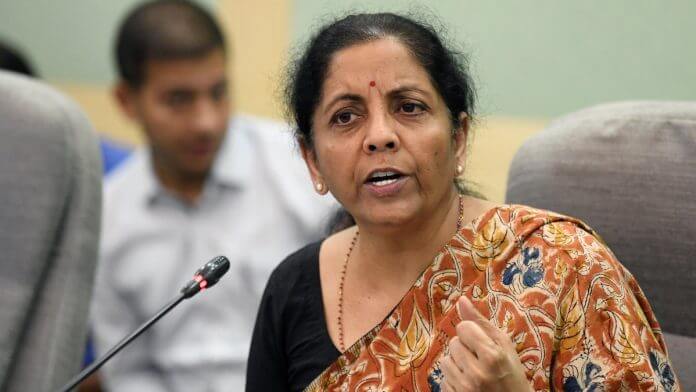Finance minister Nirmala Sitharaman tabled the Economic Survey for 2019-20 in the Lok Sabha today. The report was formulated by Chief Economic Advisor (CEA) Krishnamurthy Subramanian. The Union Budget will be presented tomorrow.
The two-volume report has been printed in lavender colour to symbolize the blending of the old and new. The report largely centers around the theme of wealth creation, with Subramaniam stating that "wealth is both a cause and effect of investment. That is why it is important for us to focus on wealth creation."
The Survey projects economic growth of 6-6.5% and fiscal growth of 5% in the fiscal year starting April 1, stating that the growth has bottomed out. The survey states that inflation has declined from 3.2% in April 2019 to 2.6% in December 2019.
To increase jobs and facilitate the projected growth, the survey calls for an overhaul of the manufacturing sector with an 'assemble in India for the world' model by removing ted tape and thus promoting exports and increasing the ease of starting businesses, registering properties, paying taxes, and enforcing contracts.
The report suggests that India can create 40 million well-paid jobs by 2025–and 80 million by 2030–by integrating “assemble in India for the world” with the government’s existing Make in India initiative and exporting network products that can give a substantial impetus to India’s target of becoming a $5 trillion economy. The Survey also reports that government interventions like debt waivers and food subsidies disrupt credit culture and disrupt formal credit flows to the very farmers it aims to benefit.
It is additionally suggested that India needs to spend $1.4 trillion on infrastructure to remove constraints in growth, such as power shortages, inadequate transport, and poor connectivity, in order to achieve a $5 trillion GDP by 2024-25. It further posits that this can only be achieved by promoting pro-business policies and eliminating "pro-crony" policies that favour specific private interests. The Survey also said India has the resources to grow like China by focusing on labour-intrusive industries, which can revive both long-term and short-term demand.
The projections are to be taken with a pinch of salt as India is currently facing an economic slowdown with just 4.5% in GDP growth during the July-September quarter despite last year's Economic Survey predicting GDP growth of 6-6.5% throughout the fiscal year. In fact, several major economic agencies have forecasted decreasing growth for the financial year 2021. For example, the International Monetary Fund (IMF) and the World Bank recently said that India's real GDP is expected to grow at 5.8% in the financial year 2021, while the Chief Economist of the State Bank of India has also forecasted growth between 5.5% and 6%.
Thus, the stated estimate appears highly optimistic. Though the Survey says: “On a net assessment, it appears that the upside risks should prevail, particularly when the government, with a strong mandate, has the capacity to deliver expeditiously on reforms. GDP growth of India should strongly rebound in 2020-21.”
Image Source: The Print

